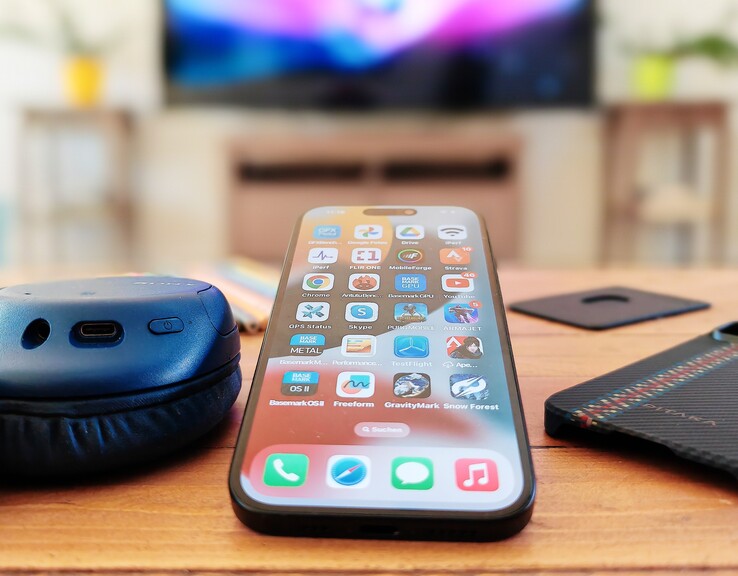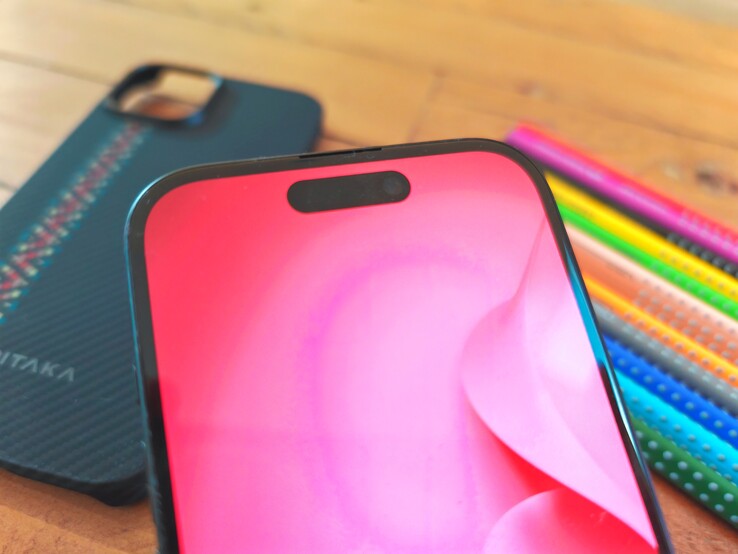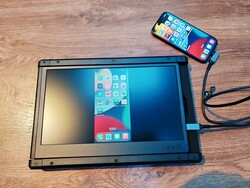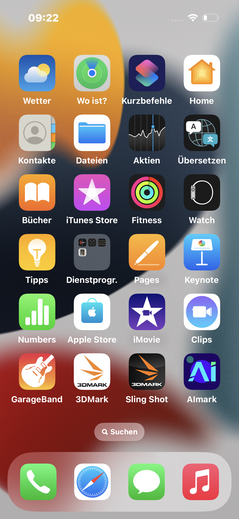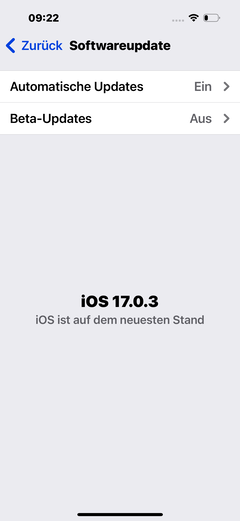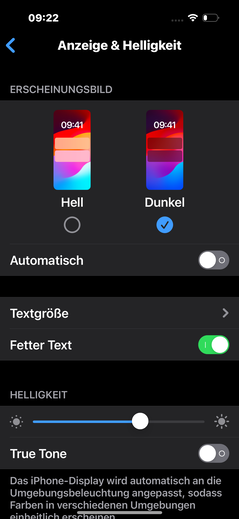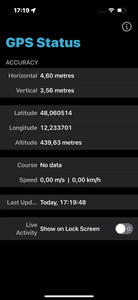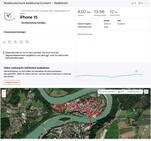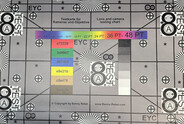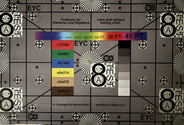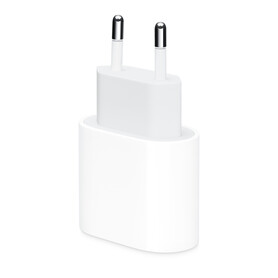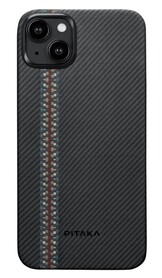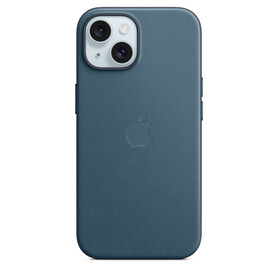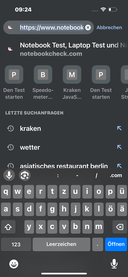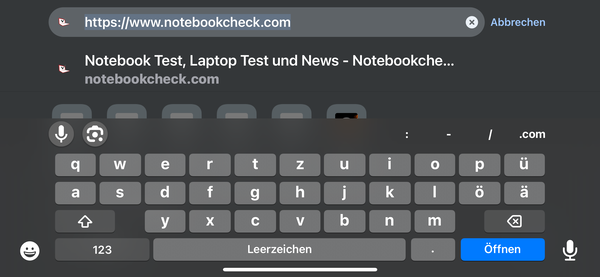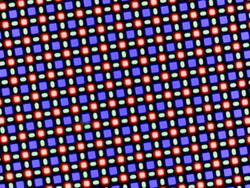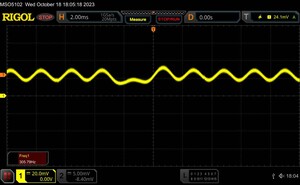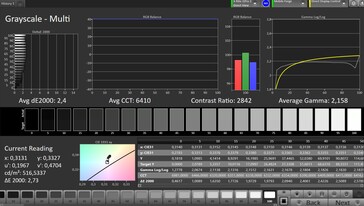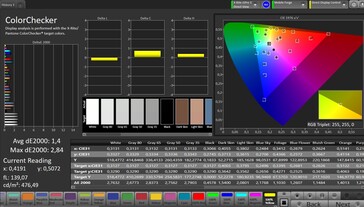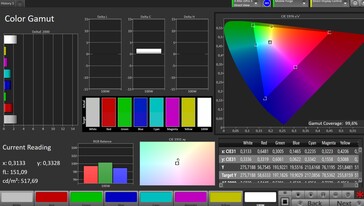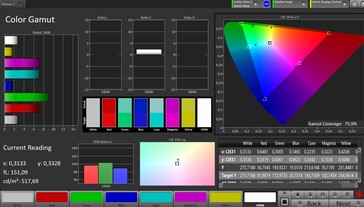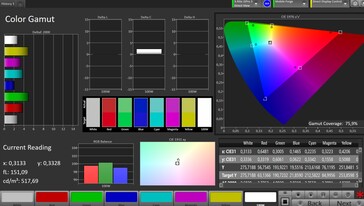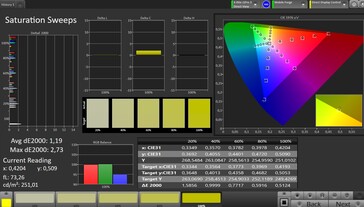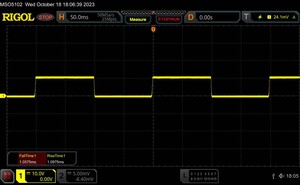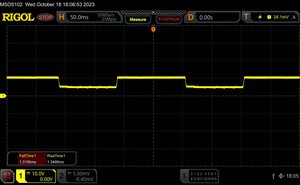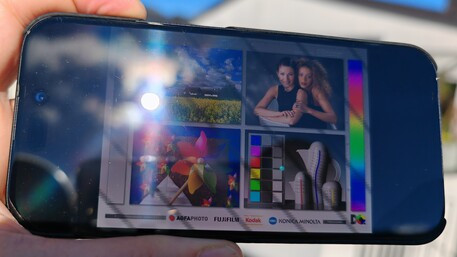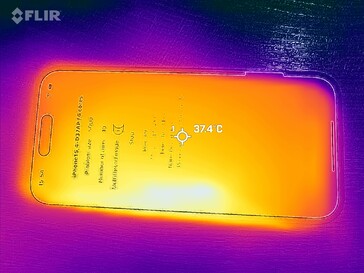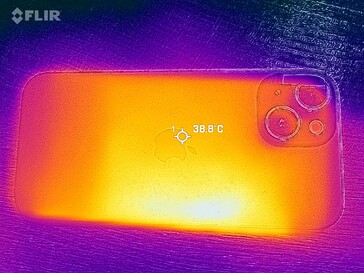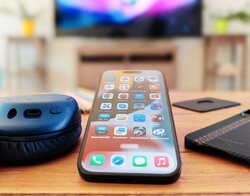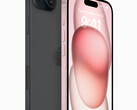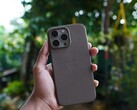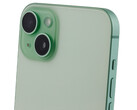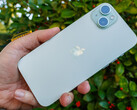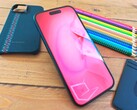Apple iPhone 15 smartphone in review - The Apple phone finally zooms in closer
Apple enthusiasts worldwide eagerly awaited September 12, 2023, as the California-based tech giant unveiled its latest iPhone generation during a grand event. While we've extensively reviewed the iPhone 15 Pro and iPhone 15 Pro Max, this article focuses on the Apple iPhone 15.
This year, the starting prices begin at $799 USD and it features the powerful Apple A16 Bionic processor, previously exclusive to last year's iPhone Pro models, and introduces a brand-new camera system with 2x telephoto zoom and Dynamic Island technology, formerly reserved for the Pro series.
Certain characteristics, however, remain unchanged from last year: the gadget supports WiFi 6, the fastest WLAN standard, lacks an Always-On display function, and uses a 60 Hz panel for the screen. In our review, we explore who would benefit from these changes and identify other differences compared to the iPhone 14.
Potential Competitors in Comparison
Rating | Date | Model | Weight | Drive | Size | Resolution | Price |
|---|---|---|---|---|---|---|---|
| 89.1 % v7 (old) | 10 / 2023 | Apple iPhone 15 A16, A16 GPU 5-Core | 171 g | 128 GB NVMe | 6.10" | 2556x1179 | |
| 89.2 % v7 (old) | 10 / 2022 | Apple iPhone 14 A15, A15 GPU 5-Core | 172 g | 128 GB NVMe | 6.10" | 2532x1170 | |
| 90.7 % v7 (old) | 10 / 2023 | Apple iPhone 15 Pro A17 Pro, A17 Pro GPU | 187 g | 128 GB NVMe | 6.10" | 2556x1179 | |
| 90.5 % v7 (old) | 03 / 2023 | Samsung Galaxy S23 SD 8 Gen 2 for Galaxy, Adreno 740 | 167 g | 128 GB UFS 3.1 Flash | 6.10" | 2340x1080 | |
| 89.1 % v7 (old) | 02 / 2023 | Xiaomi 13 SD 8 Gen 2, Adreno 740 | 189 g | 256 GB UFS 4.0 Flash | 6.36" | 2400x1080 | |
| 89 % v7 (old) | 09 / 2023 | Sony Xperia 5 V SD 8 Gen 2, Adreno 740 | 182 g | 128 GB UFS 3.1 Flash | 6.10" | 2520x1080 |
Case – Better well rounded
The iPhone 15 does not feature the aluminum casing with titanium coating introduced in the Pro and Pro Max models. Instead, similar to its predecessors, it utilizes an aluminum frame made of 75% recycled material. Apple continues its commitment to sustainability by incorporating various recycled materials into the phone, details of which can be found on Apple's website.
The back of the iPhone 15 is crafted from solid-colored glass, giving the Apple logo a more subtle appearance in a slightly darker version of the chosen shade. The color range of the iPhone 15 primarily comprises pastel shades, departing from the bold red or yellow options available in the previous model. Light blue and green, delicate yellow, rose, and black are among the available choices.
The exterior features slightly rounded edges, enhancing the ergonomic feel of handling the iPhone 15. Apple has managed to lower the weight by 0.03 oz compared to its predecessor, although this difference will most likely be undetectable in regular usage. The iPhone 15 is 100 microns bigger than the iPhone 14; nonetheless, this change has little impact on daily use.
Additionally, the case maintains its IP68 certification under IEC standard 60529, rendering the iPhone 15 waterproof for up to 30 minutes at a depth of up to 19.6 ft and providing protection against dust.
Connectivity – More affordable than last year
The Apple iPhone 15 is equipped with 6 GB of RAM and is available in three different storage capacities:
- 128 GB storage: $799 USD
- 256 GB storage: $899 USD
- 512 GB storage: $1099 USD
The EU has mandated Apple to incorporate a USB-C port for its iPhones. The iPhone 15 is internally connected with USB 2.0, resulting in slower data transfers. Nevertheless, it is still feasible to output images to an external display using a USB 3.1 cable, as Apple has integrated the Display Port protocol. It's important to mention that the smartphone currently lacks its own desktop interface. When connected to an external monitor, only the iPhone's screen is mirrored in the existing screen format.
The iPhone 15 includes NFC, which allows for the reading and writing of tags as well as the usage of Apple Pay for contactless payments.
The American models, exclusively rely on eSIM technology.
Software – Now available with Dynamic Island
Our test device is currently running iOS 17.0.3. Apple's latest operating system version introduces several changes to preinstalled apps, although there are no revolutionary alterations to the design or similar aspects. Those accustomed to using an iPhone in recent years will quickly adapt.
One notable addition is NameDrop, which allows users to send their contact information directly to another nearby iOS device and interact with widgets. For instance, during an AirDrop file transfer, if the devices are out of range, the system seamlessly transfers the data over the internet, provided both devices are logged into iCloud. Additionally, users can maintain a diary in the new journal feature, among other functionalities. Detailed information about all the changes is available on Apple's website.
The iPhone 15 also introduces Dynamic Island for the first time: the front camera and the infrared sensor now sit slightly lower in the display. This area is extended with a black space for notifications, where corresponding content is displayed.
While Apple does not officially specify how long the iPhone 15 will receive updates, previous generations of Apple phones have received fixes and completely new iOS versions for at least 5 years, even if older handsets may not support all of the current features.
Communication and GNSS – Still only WiFi 6
Unlike the new iPhone 15 Pro models, the iPhone 15 does not receive an update to WiFi 6E. Consequently, users are unable to utilize the less congested and faster 6 GHz band for WLAN networks.
Our iPhone 15 performs similarly to its predecessor during our WLAN test with the router Asus ROG Rapture GT-AXE 11000 as a reference. However, there are intermittent reductions in data rates that continue even after repeated testing. While the iPhone 15 cannot fully exploit a gigabit internet connection, it does provide enough speeds for quick data transfers.
The Apple iPhone 15 boasts exceptional versatility in terms of its cellular modem frequencies, ensuring usability across nearly all countries worldwide and facilitating mobile internet access. It's important to note, though, that 5G mmWave functionality is exclusive to US customers. Throughout our testing, the smartphone consistently demonstrated reliable cell phone reception in urban environments during random tests.
| Networking | |
| Apple iPhone 15 | |
| iperf3 receive AXE11000 | |
| iperf3 transmit AXE11000 | |
| Apple iPhone 14 | |
| iperf3 receive AXE11000 | |
| iperf3 transmit AXE11000 | |
| Apple iPhone 15 Pro | |
| iperf3 transmit AXE11000 6GHz | |
| iperf3 receive AXE11000 6GHz | |
| Samsung Galaxy S23 | |
| iperf3 receive AXE11000 | |
| iperf3 transmit AXE11000 | |
| iperf3 transmit AXE11000 6GHz | |
| iperf3 receive AXE11000 6GHz | |
| Xiaomi 13 | |
| iperf3 receive AXE11000 | |
| iperf3 transmit AXE11000 | |
| iperf3 transmit AXE11000 6GHz | |
| iperf3 receive AXE11000 6GHz | |
| Sony Xperia 5 V | |
| iperf3 receive AXE11000 | |
| iperf3 transmit AXE11000 | |
| Average of class Smartphone | |
| iperf3 receive AXE11000 | |
| iperf3 transmit AXE11000 | |
| iperf3 transmit AXE11000 6GHz | |
| iperf3 receive AXE11000 6GHz | |
The iPhone 15 offers a location accuracy of around 33 ft indoors, which improves to about 16.4 ft outdoors, using all global available satellite networks for tracking.
To provide a more precise assessment of its positioning accuracy, we conducted a bike ride using the Apple phone alongside the Garmin Venu 2 smartwatch as a comparison device. Apart from minor issues in extremely narrow alleys with tall buildings, the path tracking was highly accurate.
Based on our testing, we wholeheartedly recommend the iPhone 15 for navigation activities.
Phone features and voice quality
Apple's phone app is thoughtfully designed, allowing users to access the call list, favorites, contacts, and the numeric keypad through separate tabs. It supports both VoLTE and VoWiFi functionalities.
Overall, we appreciate the voice quality via VoLTE and VoWiFi; but, there are some minor issues to note. The other party's voice sounds slightly muffled through the earpiece. On the contrary, our voice is transmitted very clearly by the microphone, regardless of whether we speak loudly or softly. Conversations can also be conducted without issues using the speaker and the hands-free microphone. It's also worth mentioning that the microphone tends to overload when speaking too loudly.
Cameras – Finally with Tele-Zoom
The iPhone 15 features a new 48-megapixel main camera. Users may pick between 12-megapixel and 24-megapixel images as the final output in the settings. To improve light sensitivity, the phone uses pixel-merging technology, which combines many pixels into one.
24-megapixel images, on the other hand, can only be shot at 1x zoom and without a flash. This limitation applies even in night mode, macro shots, and portrait lighting, where only 12-megapixel pictures are possible. Only when the "resolution control" option is activated in the settings will the full 48-megapixel be available.
The main camera of the iPhone 15 captures high-quality photos with abundant details, and lifelike color reproduction, and performs admirably in challenging scenarios, such as capturing a cloudy sky. In comparison to its predecessor, there is a noticeable improvement in brightening dark areas.
Moreover, the smartphone extends its zoom capabilities, offering a total of 4x optical magnification ranging from a wide-angle lens to 2x telephoto. Additionally, it features a digital zoom that can reach up to 10x. This increased zoom range provides the iPhone 15 with greater flexibility in image composition, especially given that the magnification can be adjusted in increments of 0.1.
Videos can be recorded at a maximum of 4K with 60 fps. This functionality works seamlessly, with highly precise autofocus that does not exhibit any pumping, and excellent brightness adjustment.
We are already familiar with the iPhone 14's wide-angle camera: It shoots well-brightened photographs with little distortions, but it cannot do magic with small details and renders them very blurry.
Image comparison
Choose a scene and navigate within the first image. One click changes the position on touchscreens. One click on the zoomed-in image opens the original in a new window. The first image shows the scaled photograph of the test device.
Hauptkamera BlumeHauptkamera UmgebungHauptkamera Low LightWeitwinkelkameraThe primary camera of the iPhone 15 demonstrates exceptional quality under studio lighting conditions, capturing our test chart with intricate details and excellent contrast. Even towards the edges, the sharpness remains consistent, showcasing impressive performance. In low light, the image quality becomes slightly grainy, leading to a reduction in sharpness. Nevertheless, the subject remains adequately recognizable overall.
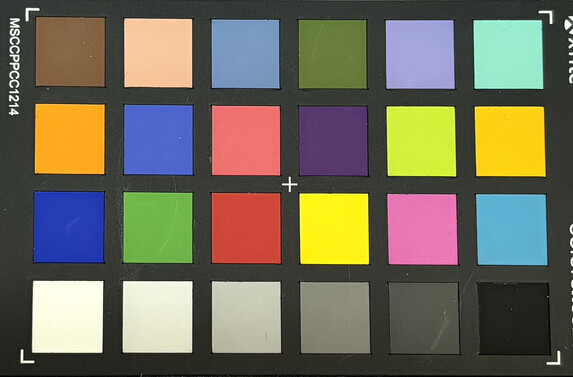
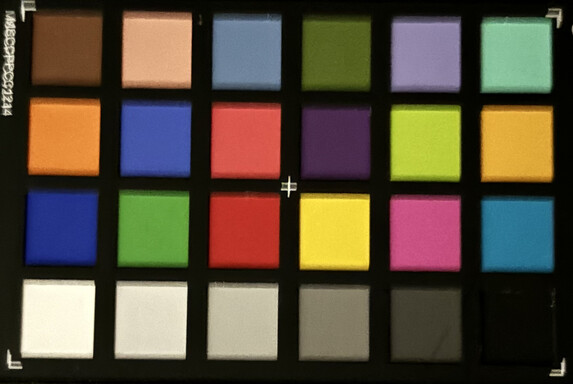
Accessories and Warranty – New FineWoven case
Apple provides a 12-month warranty for its devices. Additionally, customers have the option to protect their devices from accidental damage through Apple Care+.
Various cases are available in the Apple Store, including the newly introduced FineWoven cases that mimic the texture of suede but are made from plastic. Notably, a power adapter, which is not included, can be purchased for ~$20 USD directly from Apple. The iPhone 15 is compatible with all other USB-C chargers we tested, aligning with the EU's goal for standardization.
We are thankful to Pitaka, who provided us with a few accessories for our device photos and to explore the iPhone's MagSafe features. These include the MagEZ Case 4, which allows the use of MagSafe accessories and is available in different designs. Additionally, the MagEZ Grip, which attaches to the iPhone 15 via MagSafe and doubles as a stand, and the MagEZ Card Sleeve 3, also attachable via MagSafe, are capable of holding up to 2 smart cards and business cards.
Input devices & operation – Recognizes faces in 3D
The touchscreen of the iPhone 15 is incredibly smooth and reliable, even towards the edges. It's important to note that it features a 60 Hz panel, which can occasionally result in slightly less responsive operation compared to the iPhone 15 Pro with its 120 Hz panel. As a result, scrolling may not be as fluid.
While Apple has removed the fingerprint sensor, users have the option to unlock the phone using facial recognition technology, known as FaceID. This method creates a three-dimensional map of the user's face using images and an infrared sensor. It is exceptionally reliable and works flawlessly even when the user wears glasses or sunglasses and is also resistant to manipulation attempts.
Display – Bright with true to color
The iPhone 15's still display measures 6.1 inches, with a slight increase in pixel count compared to its predecessor, now at 2556 x 1179 pixels.
The brightness can reach an average of up to 1055 cd/m² with an exposed sensor and a remarkable 1598 cd/m² with smaller surface areas (APL18). Consequently, the OLED panel is exceptionally suitable for displaying HDR content.
It's worth noting that we detected PWM flickering at 306 Hz at very low brightness levels. As a result, users with sensitivity to this should consider testing the screen before making a purchase.
| |||||||||||||||||||||||||
Brightness Distribution: 94 %
Center on Battery: 1046 cd/m²
Contrast: ∞:1 (Black: 0 cd/m²)
ΔE ColorChecker Calman: 1.4 | ∀{0.5-29.43 Ø4.77}
ΔE Greyscale Calman: 2.4 | ∀{0.09-98 Ø5}
99.6% sRGB (Calman 2D)
Gamma: 2.158
CCT: 6410 K
| Apple iPhone 15 Super Retina XDR OLED, 2556x1179, 6.1" | Apple iPhone 14 OLED, 2532x1170, 6.1" | Apple iPhone 15 Pro Super Retina XDR OLED, 2556x1179, 6.1" | Samsung Galaxy S23 Dynamic AMOLED 2x, 2340x1080, 6.1" | Xiaomi 13 OLED, 2400x1080, 6.4" | Sony Xperia 5 V OLED, 2520x1080, 6.1" | |
|---|---|---|---|---|---|---|
| Screen | -3% | 21% | -37% | 10% | -4% | |
| Brightness middle (cd/m²) | 1046 | 835 -20% | 1092 4% | 1125 8% | 1209 16% | 889 -15% |
| Brightness (cd/m²) | 1019 | 841 -17% | 1086 7% | 1122 10% | 1208 19% | 898 -12% |
| Brightness Distribution (%) | 94 | 97 3% | 99 5% | 96 2% | 98 4% | 97 3% |
| Black Level * (cd/m²) | ||||||
| Colorchecker dE 2000 * | 1.4 | 1.05 25% | 0.91 35% | 3.2 -129% | 1.2 14% | 1.4 -0% |
| Colorchecker dE 2000 max. * | 2.84 | 2.81 1% | 1.95 31% | 4.9 -73% | 3 -6% | 4.5 -58% |
| Greyscale dE 2000 * | 2.4 | 2.6 -8% | 1.3 46% | 3.3 -38% | 2.1 12% | 1 58% |
| Gamma | 2.158 102% | 2.034 108% | 2.215 99% | 1.97 112% | 2.26 97% | 2.23 99% |
| CCT | 6410 101% | 6616 98% | 6481 100% | 6504 100% | 6504 100% | 6456 101% |
* ... smaller is better
Screen Flickering / PWM (Pulse-Width Modulation)
| Screen flickering / PWM detected | 306 Hz | ||
The display backlight flickers at 306 Hz (worst case, e.g., utilizing PWM) . The frequency of 306 Hz is relatively high, so most users sensitive to PWM should not notice any flickering. However, there are reports that some users are still sensitive to PWM at 500 Hz and above, so be aware. In comparison: 53 % of all tested devices do not use PWM to dim the display. If PWM was detected, an average of 8086 (minimum: 5 - maximum: 343500) Hz was measured. | |||
Measurement series with fixed zoom level and different brightness settings
To delve deeper into color representation, we utilized a spectrophotometer and the CalMAN software to measure the screen. When True Tone is deactivated, the deviations from ideal values are minimal. Consequently, colors on the iPhone 15 can be accurately assessed, even in a professional setting.
Although the response times are marginally higher than those of the iPhone 15 Pro, they still clock in at less than 3 ms, making them suitable for professional gamers.
Display Response Times
| ↔ Response Time Black to White | ||
|---|---|---|
| 2.2 ms ... rise ↗ and fall ↘ combined | ↗ 1.1 ms rise | |
| ↘ 1.1 ms fall | ||
| The screen shows very fast response rates in our tests and should be very well suited for fast-paced gaming. In comparison, all tested devices range from 0.1 (minimum) to 240 (maximum) ms. » 11 % of all devices are better. This means that the measured response time is better than the average of all tested devices (20.2 ms). | ||
| ↔ Response Time 50% Grey to 80% Grey | ||
| 2.7 ms ... rise ↗ and fall ↘ combined | ↗ 1.3 ms rise | |
| ↘ 1.4 ms fall | ||
| The screen shows very fast response rates in our tests and should be very well suited for fast-paced gaming. In comparison, all tested devices range from 0.165 (minimum) to 636 (maximum) ms. » 11 % of all devices are better. This means that the measured response time is better than the average of all tested devices (31.6 ms). | ||
Performance – iPhone 15 with Apple A16 Bionic
The iPhone 15 is powered by Apple's A16 Bionic chip, previously featured in last year's iPhone 14 Pro models. This chipset incorporates six 64-bit capable ARM cores, including two high-performance cores clocked at up to 3.46 GHz and four power cores operating at up to 2.02 GHz.
During processor benchmarks, the Apple phone delivers impressive performance, outmatched only by the iPhone 15 Pro. Even highly demanding applications run seamlessly on the smartphone in everyday use.
While GPU testing run with iOS 17.0.3, the iPhone 15 exhibits tremendous power. However, several Android devices can exceed it in this category. While the iPhone 15 has the ability to handle complicated games in 1440p resolution, 4K rendering may be more difficult.
GFXBench (DX / GLBenchmark) 2.7: T-Rex Onscreen | 1920x1080 T-Rex Offscreen
GFXBench 3.0: on screen Manhattan Onscreen OGL | 1920x1080 1080p Manhattan Offscreen
GFXBench 3.1: on screen Manhattan ES 3.1 Onscreen | 1920x1080 Manhattan ES 3.1 Offscreen
GFXBench: on screen Car Chase Onscreen | 1920x1080 Car Chase Offscreen | on screen Aztec Ruins High Tier Onscreen | 2560x1440 Aztec Ruins High Tier Offscreen | on screen Aztec Ruins Normal Tier Onscreen | 1920x1080 Aztec Ruins Normal Tier Offscreen | 3840x2160 4K Aztec Ruins High Tier Offscreen
| 3DMark / Wild Life Extreme Unlimited | |
| Apple iPhone 15 Pro | |
| Xiaomi 13 | |
| Samsung Galaxy S23 | |
| Sony Xperia 5 V | |
| Apple iPhone 14 | |
| Apple iPhone 15 | |
| 3DMark / Wild Life Extreme | |
| Apple iPhone 15 Pro | |
| Samsung Galaxy S23 | |
| Xiaomi 13 | |
| Sony Xperia 5 V | |
| Apple iPhone 14 | |
| Apple iPhone 15 | |
| 3DMark / Wild Life Unlimited Score | |
| Apple iPhone 15 Pro | |
| Xiaomi 13 | |
| Sony Xperia 5 V | |
| Samsung Galaxy S23 | |
| Apple iPhone 15 | |
| Apple iPhone 14 | |
| GFXBench (DX / GLBenchmark) 2.7 / T-Rex Onscreen | |
| Xiaomi 13 | |
| Samsung Galaxy S23 | |
| Sony Xperia 5 V | |
| Apple iPhone 15 | |
| Apple iPhone 15 Pro | |
| Apple iPhone 14 | |
| GFXBench (DX / GLBenchmark) 2.7 / T-Rex Offscreen | |
| Sony Xperia 5 V | |
| Samsung Galaxy S23 | |
| Apple iPhone 14 | |
| Xiaomi 13 | |
| Apple iPhone 15 Pro | |
| Apple iPhone 15 | |
| GFXBench 3.0 / Manhattan Onscreen OGL | |
| Xiaomi 13 | |
| Samsung Galaxy S23 | |
| Sony Xperia 5 V | |
| Apple iPhone 15 | |
| Apple iPhone 15 Pro | |
| Apple iPhone 14 | |
| GFXBench 3.0 / 1080p Manhattan Offscreen | |
| Sony Xperia 5 V | |
| Samsung Galaxy S23 | |
| Xiaomi 13 | |
| Apple iPhone 14 | |
| Apple iPhone 15 Pro | |
| Apple iPhone 15 | |
| GFXBench 3.1 / Manhattan ES 3.1 Onscreen | |
| Xiaomi 13 | |
| Samsung Galaxy S23 | |
| Sony Xperia 5 V | |
| Apple iPhone 15 | |
| Apple iPhone 14 | |
| Apple iPhone 15 Pro | |
| GFXBench 3.1 / Manhattan ES 3.1 Offscreen | |
| Sony Xperia 5 V | |
| Samsung Galaxy S23 | |
| Xiaomi 13 | |
| Apple iPhone 14 | |
| Apple iPhone 15 Pro | |
| Apple iPhone 15 | |
| GFXBench / Car Chase Onscreen | |
| Samsung Galaxy S23 | |
| Sony Xperia 5 V | |
| Xiaomi 13 | |
| Apple iPhone 15 Pro | |
| Apple iPhone 14 | |
| Apple iPhone 15 | |
| GFXBench / Car Chase Offscreen | |
| Samsung Galaxy S23 | |
| Sony Xperia 5 V | |
| Apple iPhone 15 Pro | |
| Apple iPhone 14 | |
| Xiaomi 13 | |
| Apple iPhone 15 | |
| GFXBench / Aztec Ruins High Tier Onscreen | |
| Samsung Galaxy S23 | |
| Sony Xperia 5 V | |
| Xiaomi 13 | |
| Apple iPhone 15 Pro | |
| Apple iPhone 15 | |
| Apple iPhone 14 | |
| GFXBench / Aztec Ruins High Tier Offscreen | |
| Samsung Galaxy S23 | |
| Sony Xperia 5 V | |
| Apple iPhone 15 Pro | |
| Xiaomi 13 | |
| Apple iPhone 15 | |
| Apple iPhone 14 | |
| GFXBench / Aztec Ruins Normal Tier Onscreen | |
| Samsung Galaxy S23 | |
| Sony Xperia 5 V | |
| Xiaomi 13 | |
| Apple iPhone 14 | |
| Apple iPhone 15 | |
| Apple iPhone 15 Pro | |
| GFXBench / Aztec Ruins Normal Tier Offscreen | |
| Xiaomi 13 | |
| Samsung Galaxy S23 | |
| Sony Xperia 5 V | |
| Apple iPhone 15 Pro | |
| Apple iPhone 15 | |
| Apple iPhone 14 | |
| GFXBench / 4K Aztec Ruins High Tier Offscreen | |
| Samsung Galaxy S23 | |
| Sony Xperia 5 V | |
| Xiaomi 13 | |
| Apple iPhone 15 | |
| Apple iPhone 15 Pro | |
| Apple iPhone 14 | |
The iPhone also excels in terms of internet browsing speed: websites load swiftly, and images are readily available while scrolling. Even intricate HTML5 websites pose no challenges for the iPhone, ensuring a seamless browsing experience.
| Jetstream 2 - 2.0 Total Score | |
| Apple iPhone 15 Pro (Chrome 117) | |
| Average Apple A16 Bionic (228 - 282, n=5) | |
| Apple iPhone 15 (Chrome 117) | |
| Apple iPhone 14 (Safari 16) | |
| Sony Xperia 5 V (Chrome 117.0.5938.60) | |
| Samsung Galaxy S23 (Chrome 109) | |
| Average of class Smartphone (23.8 - 387, n=148, last 2 years) | |
| Xiaomi 13 (Chrome 108) | |
| Speedometer 2.0 - Result 2.0 | |
| Apple iPhone 15 Pro (Chrome 117) | |
| Average Apple A16 Bionic (327 - 419, n=4) | |
| Apple iPhone 14 (Safari 16) | |
| Apple iPhone 15 (Chrome 117) | |
| Average of class Smartphone (15.2 - 643, n=120, last 2 years) | |
| Sony Xperia 5 V (Chrome 117.0.5938.60) | |
| Samsung Galaxy S23 (Chrome 109) | |
| Xiaomi 13 (Chrome 108) | |
| WebXPRT 3 - Overall | |
| Apple iPhone 15 Pro (Chrome 117) | |
| Average Apple A16 Bionic (286 - 292, n=4) | |
| Apple iPhone 15 (Chrome 117) | |
| Apple iPhone 14 (Safari 16) | |
| Sony Xperia 5 V (Chrome 117.0.5938.60) | |
| Average of class Smartphone (38 - 380, n=30, last 2 years) | |
| Octane V2 - Total Score | |
| Apple iPhone 15 Pro (Chrome 117) | |
| Average Apple A16 Bionic (68554 - 75718, n=5) | |
| Apple iPhone 15 (Chrome 117) | |
| Apple iPhone 14 (Safari 16) | |
| Sony Xperia 5 V (Chrome 117.0.5938.60) | |
| Samsung Galaxy S23 (Chrome 109) | |
| Average of class Smartphone (2228 - 126661, n=195, last 2 years) | |
| Xiaomi 13 (Chrome 108) | |
| Mozilla Kraken 1.1 - Total | |
| Average of class Smartphone (257 - 28190, n=155, last 2 years) | |
| Xiaomi 13 (Chrome 108) | |
| Sony Xperia 5 V (Chrome 117.0.5938.60) | |
| Samsung Galaxy S23 (Chrome 109) | |
| Apple iPhone 15 (Chrome 117) | |
| Apple iPhone 14 (Safari 16) | |
| Average Apple A16 Bionic (411 - 506, n=5) | |
| Apple iPhone 15 Pro (Chrome 117) | |
* ... smaller is better
Apple phones, including the iPhone 15, feature rapid NVMe flash. Unfortunately, there are no trustworthy storage benchmarks for iOS, thus we cannot compare the speed to other smartphones. In ordinary use, the iPhone 15 performed admirably. Data transfers were quick, and loading times were brief.
Games – Smooth gaming at high settings
We tested several games on the iPhone 15, including the demanding Genshin Impact. However, due to the 60 Hz screen, achieving more than 60 fps is not possible. Nevertheless, the game runs smoothly even in high settings. PUBG Mobile and Diablo: Immortal also work seamlessly.
Regrettably, the iPhone 15 cannot take advantage of Apple's current gaming initiative, which aims to bring AAA titles from major consoles and PCs to the iPhone. This capability requires the Apple A17 Pro as SoC.
It's worth mentioning that GameBench's software package does not currently support iOS 17. As a result, we presently lack detailed frame rates for the games. We will provide this information as soon as it becomes available.
Emissions – Throttles significantly
Temperature
Under extended usage, the iPhone 15 reaches temperatures of up to 110.66 °F (43.7°C) . While the device does become noticeably warm, the temperature rise is not yet at a critical level.
During prolonged usage, the SoC experiences significant throttling, slowing down by a minimum of 15.7% and up to 24.7% in the 3DMark Stress tests after 20 benchmark runs.
(±) The maximum temperature on the upper side is 42 °C / 108 F, compared to the average of 35.2 °C / 95 F, ranging from 21.9 to 247 °C for the class Smartphone.
(±) The bottom heats up to a maximum of 43.7 °C / 111 F, compared to the average of 34 °C / 93 F
(+) In idle usage, the average temperature for the upper side is 23.6 °C / 74 F, compared to the device average of 32.9 °C / 91 F.
3DMark Wild Life Stress Test
| 3DMark | |
| Wild Life Stress Test Stability | |
| Apple iPhone 15 Pro | |
| Apple iPhone 14 | |
| Xiaomi 13 | |
| Apple iPhone 15 | |
| Samsung Galaxy S23 | |
| Sony Xperia 5 V | |
| Wild Life Extreme Stress Test | |
| Apple iPhone 15 Pro | |
| Apple iPhone 15 | |
| Xiaomi 13 | |
| Apple iPhone 14 | |
| Samsung Galaxy S23 | |
| Sony Xperia 5 V | |
| Solar Bay Stress Test Stability | |
| Apple iPhone 15 Pro | |
| Apple iPhone 15 | |
Speakers
The stereo speakers in the iPhone 15 are comprised of the dedicated speaker and the earpiece. While these speakers deliver a good sound quality, other high-end phones offer even fuller music sound with more pronounced low mids.
If you prefer using external speakers or headphones, you have the option to connect them via USB-C or Bluetooth. However, it's worth noting that only Apple's own AAC is available as a wireless audio codec, which does not support Hi-Res audio.
Apple iPhone 15 audio analysis
(±) | speaker loudness is average but good (81.6 dB)
Bass 100 - 315 Hz
(-) | nearly no bass - on average 17% lower than median
(±) | linearity of bass is average (11.1% delta to prev. frequency)
Mids 400 - 2000 Hz
(+) | balanced mids - only 3.2% away from median
(+) | mids are linear (4.5% delta to prev. frequency)
Highs 2 - 16 kHz
(+) | balanced highs - only 2.8% away from median
(+) | highs are linear (2.2% delta to prev. frequency)
Overall 100 - 16.000 Hz
(±) | linearity of overall sound is average (15% difference to median)
Compared to same class
» 2% of all tested devices in this class were better, 2% similar, 96% worse
» The best had a delta of 11%, average was 35%, worst was 134%
Compared to all devices tested
» 20% of all tested devices were better, 4% similar, 76% worse
» The best had a delta of 4%, average was 24%, worst was 134%
Apple iPhone 14 audio analysis
(±) | speaker loudness is average but good (80.9 dB)
Bass 100 - 315 Hz
(-) | nearly no bass - on average 20.4% lower than median
(±) | linearity of bass is average (9.8% delta to prev. frequency)
Mids 400 - 2000 Hz
(+) | balanced mids - only 3.5% away from median
(+) | mids are linear (4.8% delta to prev. frequency)
Highs 2 - 16 kHz
(+) | balanced highs - only 3.4% away from median
(+) | highs are linear (3.9% delta to prev. frequency)
Overall 100 - 16.000 Hz
(±) | linearity of overall sound is average (16.1% difference to median)
Compared to same class
» 5% of all tested devices in this class were better, 4% similar, 90% worse
» The best had a delta of 11%, average was 35%, worst was 134%
Compared to all devices tested
» 25% of all tested devices were better, 5% similar, 70% worse
» The best had a delta of 4%, average was 24%, worst was 134%
Battery life – Apple optimizes endurance
Power Consumption
Apple's iPhone 15 can draw up to 13.6 watts from the battery during peak loads, but it is generally more energy-efficient.
The phone supports a maximum charging capacity of 20 watts. Due to its relatively small battery capacity, it can be fully charged in as little as 1 hour and 30 minutes. Wireless charging is available through MagSafe at up to 15 watts and through Qi at up to 7.5 watts.
| Off / Standby | |
| Idle | |
| Load |
|
Key:
min: | |
| Apple iPhone 15 3349 mAh | Apple iPhone 14 3279 mAh | Apple iPhone 15 Pro 3274 mAh | Samsung Galaxy S23 3900 mAh | Xiaomi 13 4500 mAh | Sony Xperia 5 V 5000 mAh | Average Apple A16 Bionic | Average of class Smartphone | |
|---|---|---|---|---|---|---|---|---|
| Power Consumption | 21% | 12% | 34% | 21% | 1% | -54% | -17% | |
| Idle Minimum * (Watt) | 0.9 | 0.6 33% | 0.7 22% | 0.57 37% | 0.76 16% | 0.79 12% | 0.842 ? 6% | 0.847 ? 6% |
| Idle Average * (Watt) | 1 | 0.8 20% | 0.9 10% | 0.74 26% | 1.1 -10% | 1.08 -8% | 2.66 ? -166% | 1.446 ? -45% |
| Idle Maximum * (Watt) | 1.1 | 1 9% | 1.1 -0% | 0.83 25% | 1.13 -3% | 1.12 -2% | 2.71 ? -146% | 1.63 ? -48% |
| Load Average * (Watt) | 6 | 5.4 10% | 6 -0% | 4.26 29% | 2.99 50% | 7.93 -32% | 5.76 ? 4% | 6.95 ? -16% |
| Load Maximum * (Watt) | 13.6 | 9.2 32% | 10.1 26% | 6.16 55% | 6.63 51% | 8.78 35% | 9.28 ? 32% | 11.3 ? 17% |
* ... smaller is better
Power Consumption: Geekbench (150 cd/m²)
Power Consumption: GFXBench (150 cd/m²)
Battery life
The iPhone 15 features a 3349 mAh battery, which is somewhat more powerful than the iPhone 15 Pro and its predecessor. Overall, the three phones have comparable battery life, demonstrating Apple's adept energy management:
With its comparably tiny battery, the iPhone 15 delivers a remarkable endurance of up to 16 hours and 42 minutes in our Wi-Fi test. This means you can easily get through a day, and with typical use, you may even be able to get through a second workday without needing to recharge.
Furthermore, the iPhone 15 can run demanding apps such as games for slightly more than 5 hours without needing to be charged.
| Apple iPhone 15 3349 mAh | Apple iPhone 14 3279 mAh | Apple iPhone 15 Pro 3274 mAh | Samsung Galaxy S23 3900 mAh | Xiaomi 13 4500 mAh | Sony Xperia 5 V 5000 mAh | |
|---|---|---|---|---|---|---|
| Battery runtime | -2% | 5% | -2% | 11% | 9% | |
| Reader / Idle (h) | 45 | 44.8 0% | 45.2 0% | 37.5 -17% | 49.7 10% | 46.5 3% |
| H.264 (h) | 21.8 | 21.1 -3% | 25.4 17% | 20.9 -4% | 20.4 -6% | 24.9 14% |
| WiFi v1.3 (h) | 16.7 | 16.8 1% | 13.9 -17% | 15.4 -8% | 17 2% | 15.9 -5% |
| Load (h) | 5.1 | 4.8 -6% | 6 18% | 6.2 22% | 7.1 39% | 6.2 22% |
Pros
Cons
Verdict – Some meaningful innovations
The iPhone 15 enters the market at a slightly lower price point than its predecessor, bringing several valuable innovations. Apple caters to photography enthusiasts with the new 2x zoom camera, offering the flexibility of optical zoom for personalized pictures. Enhanced performance for applications and gaming, the introduction of Dynamic Island for notifications, and the inclusion of a USB-C port that enables compatibility with various existing accessories enhance the device's appeal.
The phone's ergonomic design provides a superior grip, while its precise tracking and extended battery life contribute to a compelling user experience. Additionally, the device boasts dust and water resistance, as well as a durable display glass, safeguarding it against damage.
Of course, it's worth noting that other smartphones in the same price range now offer faster-charging technologies. The absence of a dedicated desktop mode on the iPhone 15, particularly when connected to an external display, is a notable drawback. Furthermore, the USB-C port operates at USB 2.0 speed, falling behind the industry standard. Faster Wi-Fi 6E connectivity, commonly expected in this price bracket, is also lacking.
Despite these limitations, the iPhone 15 stands out as a high-quality, compact smartphone with impressive technical capabilities. While it excels in many areas, the competition has surged ahead in certain aspects.
For those considering alternatives, the iPhone 14 offers substantial power for contemporary applications, albeit without optical zoom. Android users might find the Samsung Galaxy S23 appealing, as it combines robust performance with a compact form factor.
Price & Availability
Unfortunately, the iPhone 15 is currently not available for purchase directly from Apple.
Apple iPhone 15
- 11/03/2023 v7 (old)
Florian Schmitt
Transparency
The selection of devices to be reviewed is made by our editorial team. The test sample was provided to the author as a loan by the manufacturer or retailer for the purpose of this review. The lender had no influence on this review, nor did the manufacturer receive a copy of this review before publication. There was no obligation to publish this review. As an independent media company, Notebookcheck is not subjected to the authority of manufacturers, retailers or publishers.
This is how Notebookcheck is testing
Every year, Notebookcheck independently reviews hundreds of laptops and smartphones using standardized procedures to ensure that all results are comparable. We have continuously developed our test methods for around 20 years and set industry standards in the process. In our test labs, high-quality measuring equipment is utilized by experienced technicians and editors. These tests involve a multi-stage validation process. Our complex rating system is based on hundreds of well-founded measurements and benchmarks, which maintains objectivity. Further information on our test methods can be found here.


